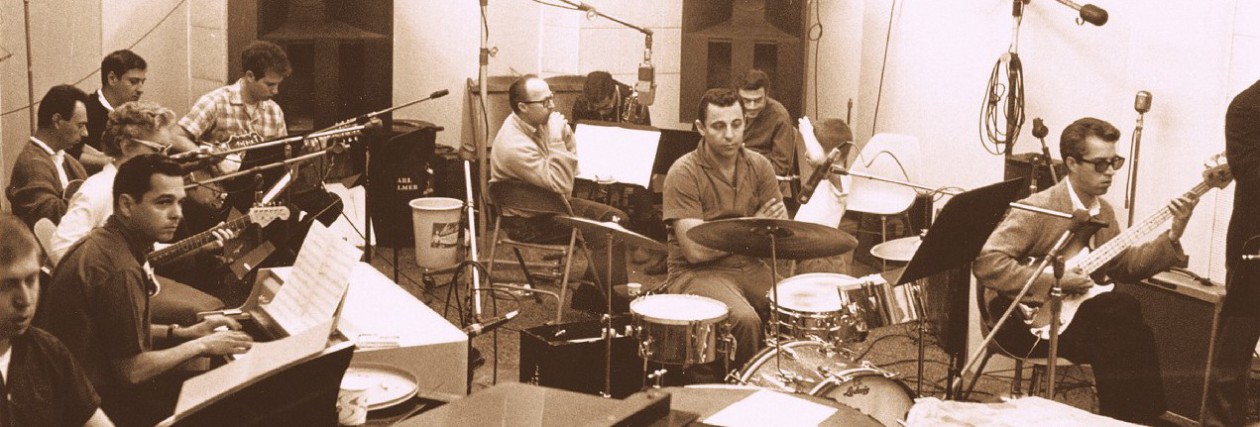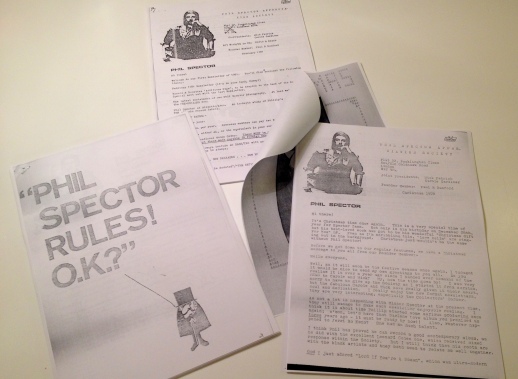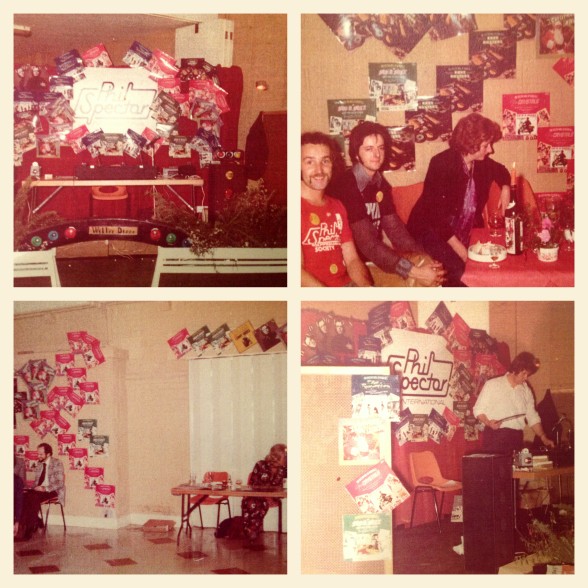I have previously written an in-depth blog post about the various stages of Spector fandom in the form of fanclubs, newsletters and fanzines. You can read about it here:
Since starting this blog, Paul Dunford, the former president of the ‘Phil Spector Appreciation Society’ (PSAS), has become one of the readers following my writings and research. In order to learn more about the PSAS, Paul has been kind enough to answer some questions about the fanclub he started in the 70s.
– – – – – – – – – – – – – – – – – – – – – – – – – – – –
Paul, thank you for taking the time out to answer some questions about the PSAS. Let’s start off by learning more about your own interest in Phil Spector and the Wall of Sound. When and how did you discover his music? Was there a definitive moment for you or a specific song that won you over?
I was just 14 years old and in my garden when I heard ‘Be my Baby’ by the Ronettes in 1963. I couldn’t believe the sound that was coming from my little transistor radio! I had to stop whatever I was doing and turn the sound up. That voice and the Spector sound was uplifting to me. And then I began to listen to all Spector’s artists. But I was always most interested in the Ronettes.
According to my research you must have started the PSAS in 1975; the year before the release of the first volume of the Rare Masters rarities collection. Did the PSAS evolve because of the new flurry of Spector activity in lieu of the newly formed Phil Spector International label & his deal with Polydor? Please do tell what you remember about the formation of the PSAS.
Yes. It was in 1975. I was working as a store manager for Venus Records, a UK chain comprising six record shops, and had contact with Barry Barnes from Polydor who did all the displays for me at my shop – and in time, also at the PSAS convention that was held.
Barry was working as a promotions man for Polydor and a good friend of mine. He covered my shop with covers of ‘Echoes of the 60s’ – the greatest hits collection that came out in 1977. I actually got a silver disc for that release as a gift which I am very proud of. It was issued to recognize the sale in the UK of more than “£ 150.000 worth of the Phil Spector album Echoes of the 60s”

I was also in contact with Tony Bramwell a lot. We often met at Polydor Records. Tony was the main reason for me getting all the news – he had previously been the road manager of the Beatles. [Cue Castanets: Tony Bramwell was instrumental in negotiations behind the short-lived Warner-Spector and Phil Spector International labels.] A lot happened during those years. The Dion album came out and the Rare Masters collections. My address is actually on Rare Masters volume 2. ‘Oak Cottage, Isington, Alton, Hampshire.’
You continued the name from an older fan club run by Phil Chapman in the late 60s – were you a member of that one? Was Phil a member of the new PSAS? And how did you go about spreading the word on your fanclub?
No, I was never in Phil Chapman’s fanclub and he was never in mine. I did use the ‘Phil Spector Appreciation Society’ name to get members. When I started the fanclub up I used to put adverts in the New Musical Express and Record Mirror and it was very successful.
From the newsletters I gather that Spector-crazy DJs like Roger Scott, Peter Young and Mike Reid were honorary members – as were Ronnie Spector, Dusty Springfield and Gene Pitney! Any other honorary member amongst your ranks back then?
The honorary members were the ones you listed, only missing is BBC host Bob Harris who I’ve gotten very friendly with. He is a DJ on BBC 2. He loves his music and he’s 68 years old now.

The PSAS was an international fanclub with members both in Europe and the US. One newsletter informs that you’ve reached nearly 200 members due to 75 new members coming onboard because of a mention of the PSAS on the back of the Rare Masters vol. 2 album. Do you remember if the PSAS attained even more members?
I think we had about 300 members. We even had fanclub merchandise like t-shirts and car stickers. We promoted Phil Spector’s company and tried to make Jeri Bo Keno’s ‘Here It Comes (and Here I Go)’ a turntable hit. But it should have been sung by Ronnie. Her voice was better than Jeri Bo Keno.
On the 25th of September 1976 the PSAS had a convention. Could you tell a bit about it? Did you have other, more informal gatherings?
We only had that one convention at Alton, my hometown. It was a great night. The DJ played everything old and new, and obviously the recent Jerri Bo Keno release. The highlight of the night was a telexed message to us from the man himself.
[Cue Castanets: the message was read aloud at the convention and re-printed in the next PSAS newsletter. The message was as follows: “This message is to express my sincere and deepest gratitude to you and all the members of the Society for their overwhelming dedication and work and love. If there were more people in the world like all of you there would not only be more of my records played and sold but more importantly this world would be a better place in which to live. I hope the convention is a success and I know it will be with so many lovely people in attendance. I am truly sorry that I cannot be there to meet each and every one of you. I thank and appreciate all of you from the buttom of my heart. With much love, Phil Spector.”]
Did you have an actual PSAS office you ran the fanclub from?
Yes, we did. It was in my home in Alton. Here is a photo of the office. That’s me sitting down and Kevin Kennedy answering the phone. He was a member of PSAS and very helpful too.

Judging from the newsletters, you obviously got some inside information on upcoming releases and Phil Spector’s current sessions from Polydor. There are interesting tid-bids in the newsletters; an unmixed version of Darlene Love’s ‘Lord If You’re a Woman’ and a new signing by Spector in the form of a vocal group called the Brewers. Apparently, there was also enough material for a third volume of Rare Masters. Was all this info always courtesy of Tony Bramwell?
Yes. There was indeed an unmixed version of ‘Lord If You’re a Woman’ and I was told there was enough material for a fantastic Darlene Love album, 10 tracks including ‘I Love Him Like I Love my Very Life.’ But for reasons unknown to me and Tony Bramwell it didn’t see the light of day. Perhaps one day we might hear it! As for the Brewers, – I have never heard about them. I think it was all rumors.
Were you ever in contact with Spector himself as president of the PSAS or was contact with him through his management / distributors?
I was in contact with his personal assistant Devra Robitaille. [Cue Castanets: Devra’s official title was that of Administrative Director of Warner-Spector. Among other things, she organized the sessions at Gold Star for the Dion album in 1975.] How wonderful that Dion album was! And Cher’s ‘A Woman’s Story & Baby, I Love You’ on the B-side.  The PSAS even arranged a ‘Spector Day’ on March 7th 1976. How did you come up with that idea?
The PSAS even arranged a ‘Spector Day’ on March 7th 1976. How did you come up with that idea?
It was due to the fact that it had been 10 years since ‘River Deep Mountain High’ was recorded. It was a wonderful day. DJs Roger Scott, Peter Young and Mike Reid got involved and every two hours ‘River Deep’ was played. It was played both on Capital radio and the BBC. Some shows were even dedicated to the PSAS.
You eventually stepped down as president of the PSAS in late 1977 and Mick Patrick and Carole Gardiner took over. They later re-morphed the newsletters into the Philately fanzine.
Yes, I knew Mick and Carole very well. We even went to CBS in London to meet Ronnie when ‘Say Goodbye to Hollywood’ was released in May, 1977. When I handed over the PSAS it got better and better. I was very pleased that it improved.
Speaking of Ronnie Spector, I know you were close with her? Do tell.
I toured with her in 1979. I was Ronnie’s manager and I paid the Ronettes. It was a great tour and we played the Venue in London for two nights. I even shared a room with her. We stayed in many hotels and I shall always remember that tour till the day I die. She even came to my house in Alton and stayed there for two nights. It’s great to know that Ronnie is bringing her ‘Beyond the Beehive’ one-woman show to the UK this year!

Thank you for all this info, Paul. Finally, what are your five personal favorite Spector records?
My personal all-time favorites are
- The Ronettes – ‘Be my Baby’
- The Crystals – ‘Then He Kissed Me’
- The Ronettes – ‘When I Saw You’
- Checkmates Ltd – ‘Black Pearl’
- Dion – ‘Born to Be with You’






